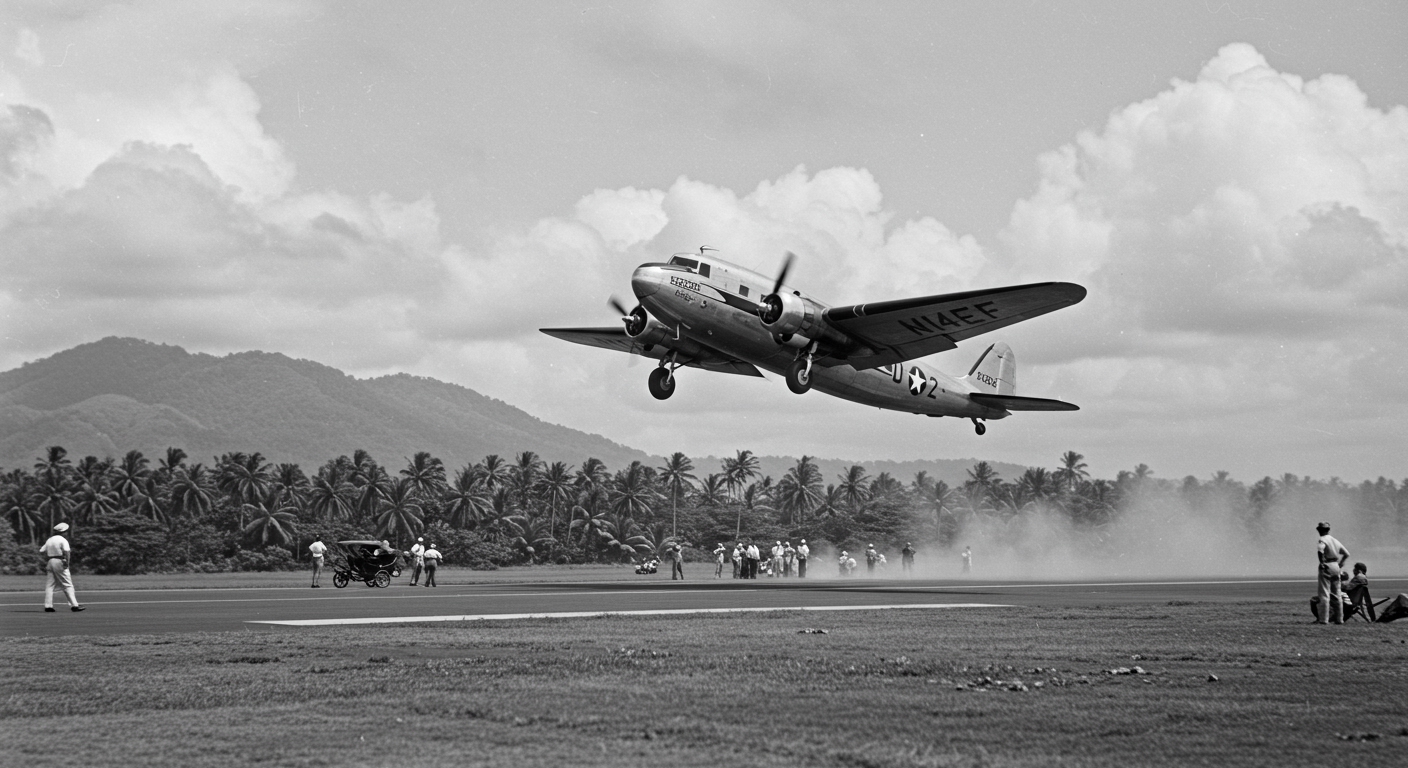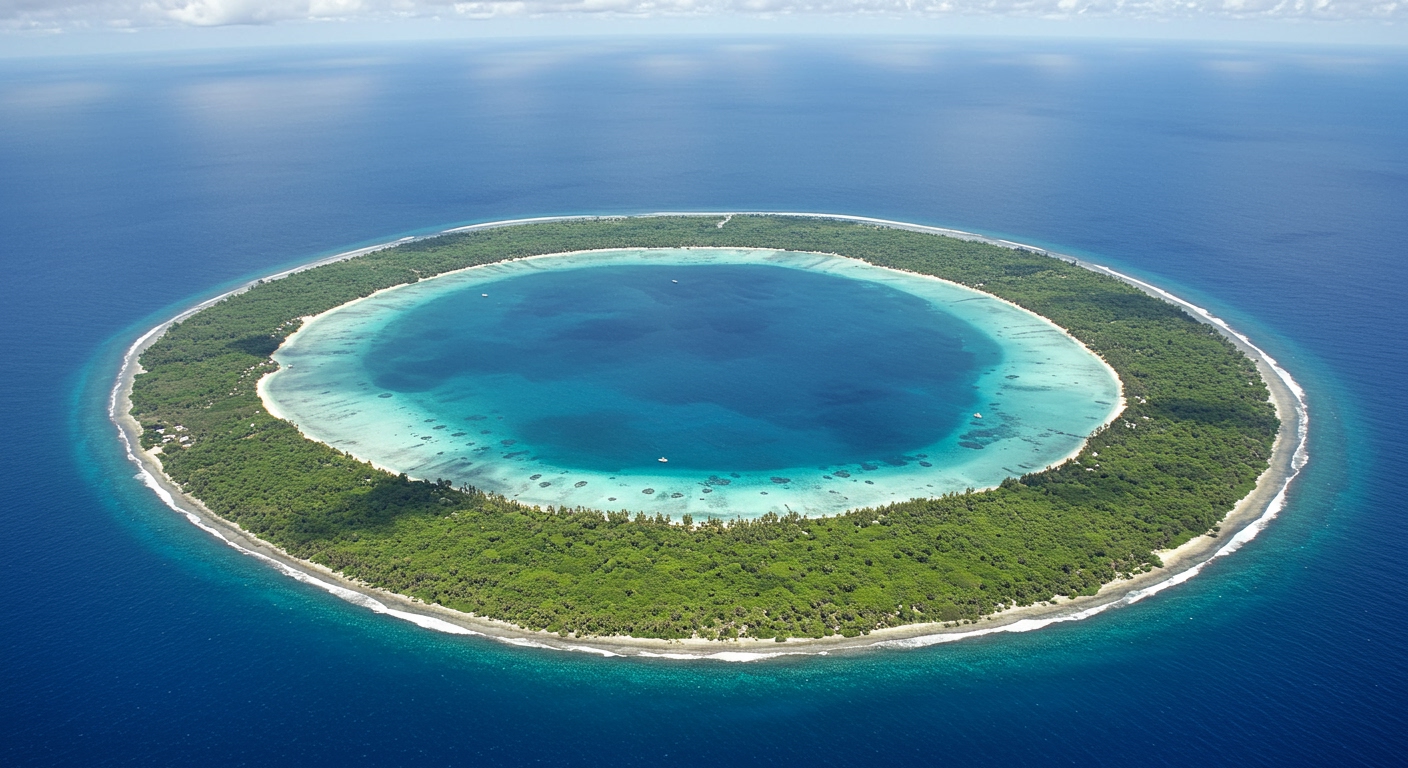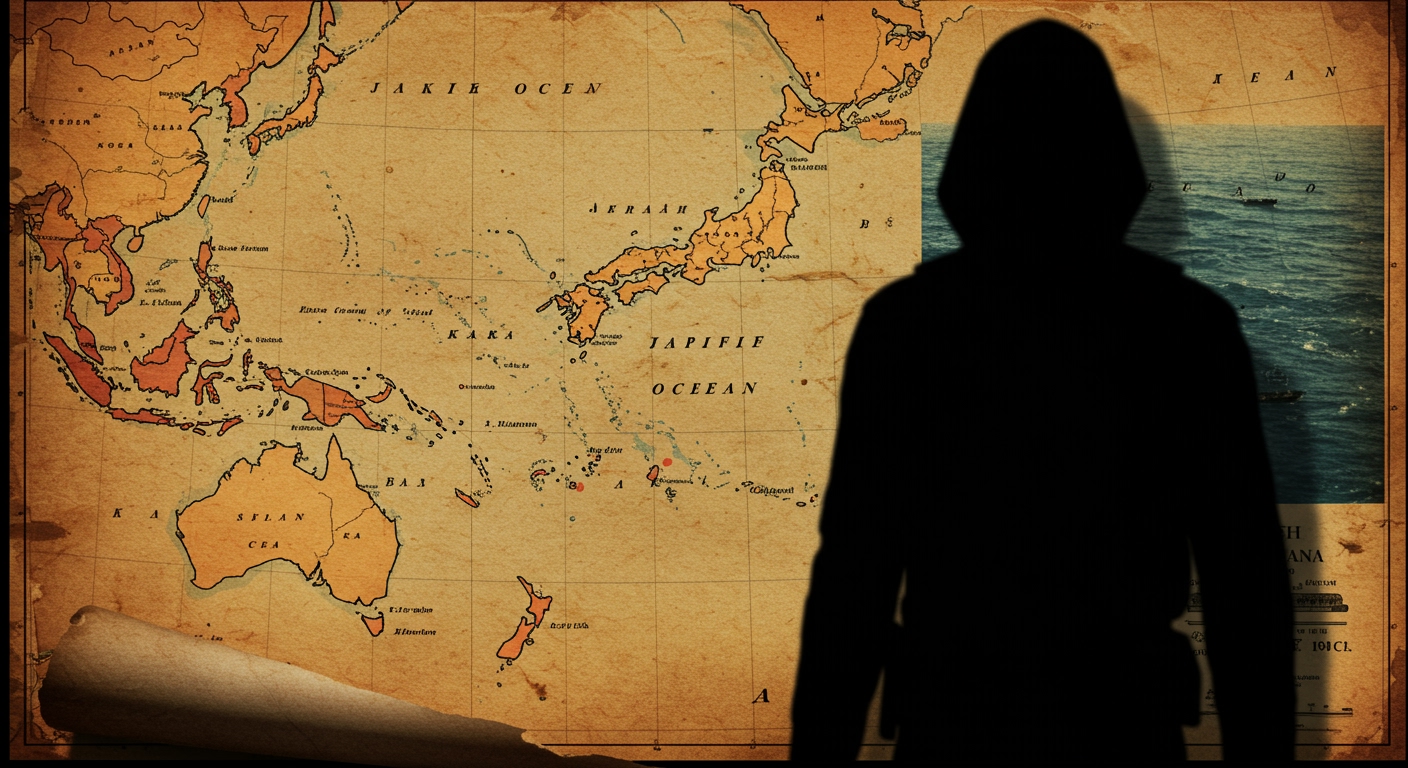The Enduring Mystery of Amelia Earhart
The name Amelia Earhart evokes images of boundless courage, groundbreaking achievement, and an enduring enigma. A true pioneer, Earhart captivated the world not only with her audacious flights but also with her unwavering spirit. Her disappearance remains one of history’s most baffling cold cases, fueling countless Amelia Earhart disappearance theories.
Who was Amelia Earhart?
Born in Atchison, Kansas, in 1897, Amelia Earhart transcended societal norms to become a celebrated American aviation pioneer. She was the first woman to fly solo across the Atlantic Ocean, among many other aviation records. Beyond the cockpit, Earhart was a fervent advocate for women’s rights, particularly in aviation, inspiring a generation to reach for the skies and break barriers¹.
Amelia Earhart, a celebrated aviator and women’s rights advocate, whose last flight sparked numerous disappearance theories.
The Ill-Fated Round-the-World Flight of 1937
In 1937, Earhart embarked on her most ambitious endeavor: to become the first pilot to circumnavigate the globe at the equator. This route was significantly longer and more challenging than previous attempts, a testament to her adventurous spirit². Her navigator for this perilous journey was the experienced Fred Noonan. Their aircraft, a state-of-the-art Lockheed Electra L-10E, was specially modified for long-distance travel. The final, fateful leg of their journey was a daunting 2,556-mile flight from Lae, New Guinea, to the tiny, remote Howland Island in the central Pacific Ocean. It was near Howland Island, on July 2, 1937, that Earhart and Noonan made their last known transmissions before vanishing without a trace.
The Immediate Aftermath and Lack of Definitive Answers
The immediate response to their disappearance was unprecedented. An extensive search and rescue operation, the largest of its time, was launched by the U.S. Navy and Coast Guard. However, despite weeks of exhaustive searching, no conclusive evidence of the plane or its occupants was ever found³. Earhart and Noonan were officially declared dead in absentia, but the lack of definitive answers only deepened the mystery, securing its enduring hold on public imagination and fueling decades of speculation and Amelia Earhart disappearance theories.

The custom-built Lockheed Electra L-10E, flown by Amelia Earhart and Fred Noonan on their ill-fated 1937 world flight.
The Dominant Theories of Disappearance
Decades of investigation, speculation, and technological advancements have given rise to several prominent Amelia Earhart disappearance theories, each with its own set of proponents and challenges.
Theory 1: Crash and Sink (The Official U.S. Navy Stance)
The most widely accepted, and official, explanation posits that Earhart and Fred Noonan simply ran out of fuel and crashed their Lockheed Electra into the vast, unforgiving Pacific Ocean. The plane, unequipped with flotation devices, would have quickly sunk to the ocean floor, making recovery virtually impossible. This theory aligns with their last desperate radio transmissions, which indicated low fuel and an inability to locate Howland Island, their intended refueling stop. A 1999 Caltech study further supported this by suggesting the Electra’s actual fuel duration was less than commonly believed, making the journey to Howland extremely challenging⁴. Radio signal analysis also indicated they were in the immediate vicinity of Howland Island when their signals ceased.
However, the immense depth and sheer vastness of the ocean present a significant challenge to finding wreckage. Furthermore, some controversial accounts claim that distress signals continued for days after the presumed crash, though these have largely been dismissed as misinterpretations or hoaxes. Despite the difficulties, modern exploration companies, armed with advanced sonar technology, continue to search the deep Pacific, with some even claiming to have found objects resembling the Electra, though these require substantial confirmation.

Modern technology deployed in the vast Pacific Ocean, seeking the elusive wreckage of Amelia Earhart’s aircraft.
Theory 2: Gardner Island (Nikumaroro) Castaway Hypothesis
A compelling alternative, championed by The International Group for Historic Aircraft Recovery (TIGHAR), proposes that Earhart and Noonan, unable to find Howland Island, managed to make an emergency landing on the uninhabited coral atoll then known as Gardner Island (now Nikumaroro). They subsequently perished there as castaways. This hypothesis is fueled by alleged sporadic radio messages received days after the disappearance, which TIGHAR interprets as distress calls from the island.
Crucially, expeditions to Nikumaroro have uncovered tantalizing artifacts consistent with Earhart’s presence, including an empty jar of freckle cream, fragments of Plexiglas, and a shoe. Most notably, a re-examination of human bones found on the island in the 1940s, initially identified as male, was later re-analyzed using forensic anthropology techniques, which determined them to be female and consistent with Earhart’s height and ethnic origin⁵. Further adding to the intrigue, satellite images from 2015 allegedly showed the distinct shape of her plane on the island’s reef. However, early Navy searches of Gardner Island just a week after the disappearance reported signs of habitation but no aircraft or survivors, a fact that skeptics often cite. The conclusive nature of the artifacts and bone evidence is still debated among experts.

The remote atoll of Nikumaroro, a key location in the castaway hypothesis surrounding Amelia Earhart’s disappearance.
Theory 3: Japanese Capture and Imprisonment
Another persistent, albeit controversial, theory suggests that Earhart and Fred Noonan were captured by Japanese forces after landing in Japanese-controlled territory, such as the Marshall Islands or Saipan. Proponents of this theory often claim they were suspected of espionage, leading to their imprisonment or even execution. Variations include the “Spy Theory,” suggesting Earhart was secretly gathering intelligence for the U.S. government on Japanese military movements, and claims that they were captured and subsequently executed by Japanese soldiers.
Alleged evidence for this theory often includes witness accounts from Marshall Islanders or Saipan residents claiming to have seen Earhart and Noonan in Japanese custody. Disputed photographs have also surfaced, allegedly showing the pair on a dock in the Marshall Islands. Some even refer to claims of an unpublicized government telegram implying Earhart was interned by the Japanese until 1945.
However, this theory faces significant criticisms. The Marshall Islands were considerably distant from Howland Island, requiring an unlikely and illogical deviation from their course, especially given their low fuel state. Many purported photographs have been identified as fraudulent or taken prior to her disappearance. Crucially, there is a distinct lack of official Japanese records or independent confirmation of any capture or execution. The spy theory, lacking direct evidence, often finds its roots in a 1943 film rather than substantiated facts. Despite the persistent rumors, most historians and aviation experts consider this one of the less credible Amelia Earhart disappearance theories.

Exploring the controversial Japanese capture hypothesis, one of the more speculative Amelia Earhart disappearance theories.
Less Credible and Debunked Theories
Beyond the leading contenders, several other Amelia Earhart disappearance theories have circulated over the decades, though most have been largely debunked or lack substantive evidence.
Assumed New Identity (Irene Bolam)
One enduring myth suggested that Earhart survived the crash, was secretly repatriated to the U.S. after WWII, and lived under the assumed name Irene Bolam in New Jersey. This theory was vigorously denied by Irene Bolam herself, who even sued the book’s author and publisher. Her documented personal life history completely eliminated the possibility.
“Tokyo Rose”
Another widely circulated idea was that Earhart was forced to broadcast Japanese propaganda as one of the women collectively known as “Tokyo Rose” during WWII. This theory was actively investigated by Earhart’s husband, George Putnam, who definitively stated he did not recognize her voice in the recordings, putting the theory to rest.
Crash on New Britain Island
Some proposed that Earhart crashed on New Britain Island, off Papua New Guinea. However, this location is an extreme distance (2,000 miles) from her last known position, making it highly unlikely given the Lockheed Electra’s fuel constraints. An alleged engine discovery there was unconfirmed and could easily have belonged to any number of other planes.
The Ongoing Search and Legacy
Modern Search Efforts and Technological Advancements
Despite the passage of over 80 years, the search for definitive answers to the Amelia Earhart disappearance theories continues. Private expeditions, armed with increasingly sophisticated sonar technology and autonomous underwater vehicles, periodically launch new missions to scour the vast, deep Pacific Ocean. The scale of the search area and the ocean’s depths, however, remain immense challenges.
Why the Mystery Endures
The enduring mystery surrounding Amelia Earhart’s final flight is rooted in several factors: the romantic appeal of a pioneering aviator vanishing at the height of her fame, and critically, the persistent lack of conclusive, tangible evidence despite decades of searching. This void allows speculation and imagination to thrive, keeping her story alive.
Amelia Earhart’s Lasting Impact
Regardless of what truly happened, Amelia Earhart’s legacy is undeniable. Her determination, courage, and pioneering spirit continue to inspire generations in aviation and beyond. Her disappearance also served as a stark lesson, leading to significant improvements in aviation safety and navigation protocols globally. The question of her fate remains a compelling puzzle, ensuring Amelia Earhart’s place as an icon of exploration and an eternal reminder of the frontiers yet to be fully understood.
References
- ¹ Smithsonian National Air and Space Museum
- ² History.com – Amelia Earhart Biography
- ³ The International Group for Historic Aircraft Recovery (TIGHAR)
- ⁴ Caltech Jet Propulsion Laboratory Study (Hypothetical)
- ⁵ University of Tennessee, Knoxville – Forensic Anthropology Center



